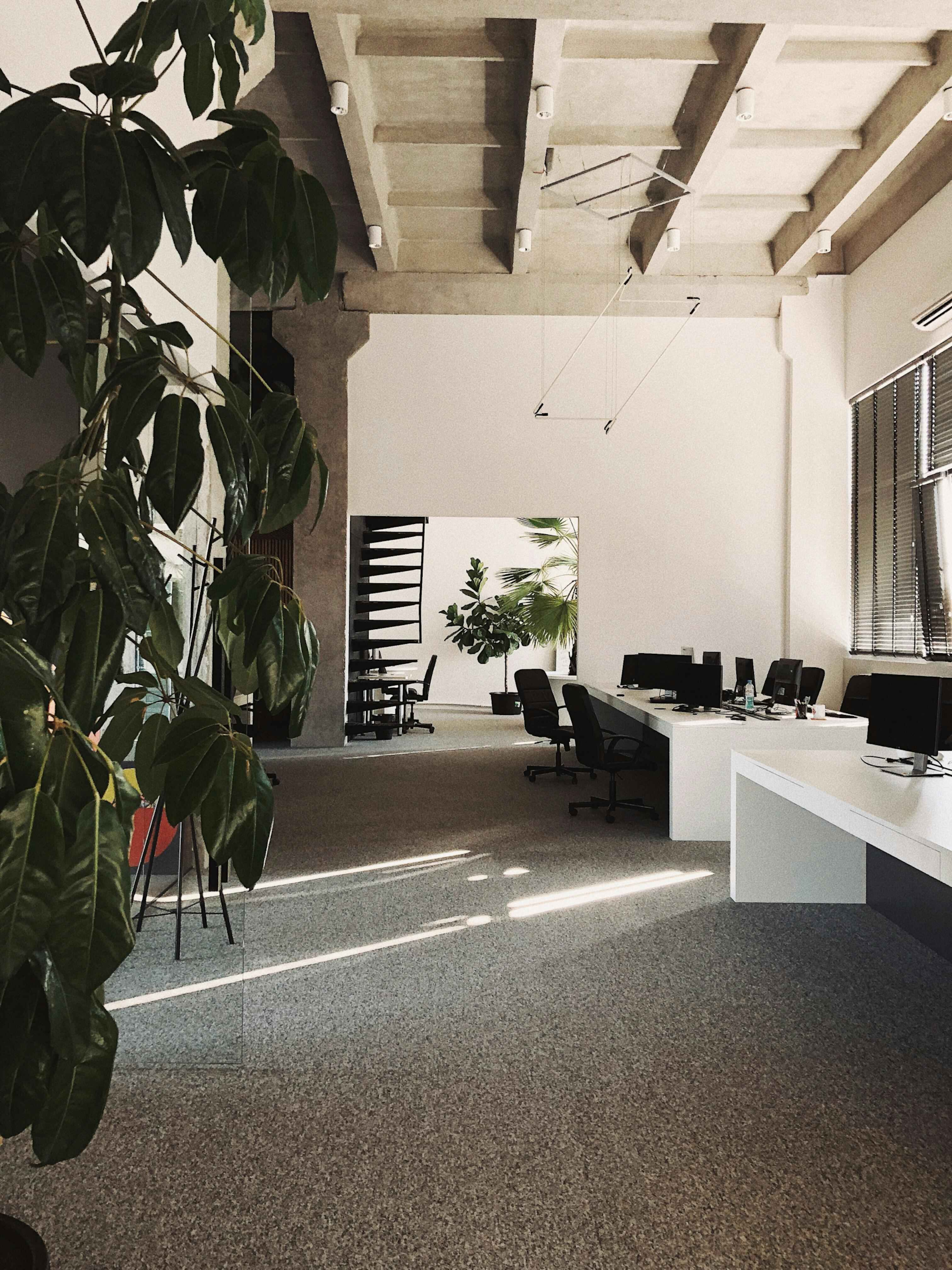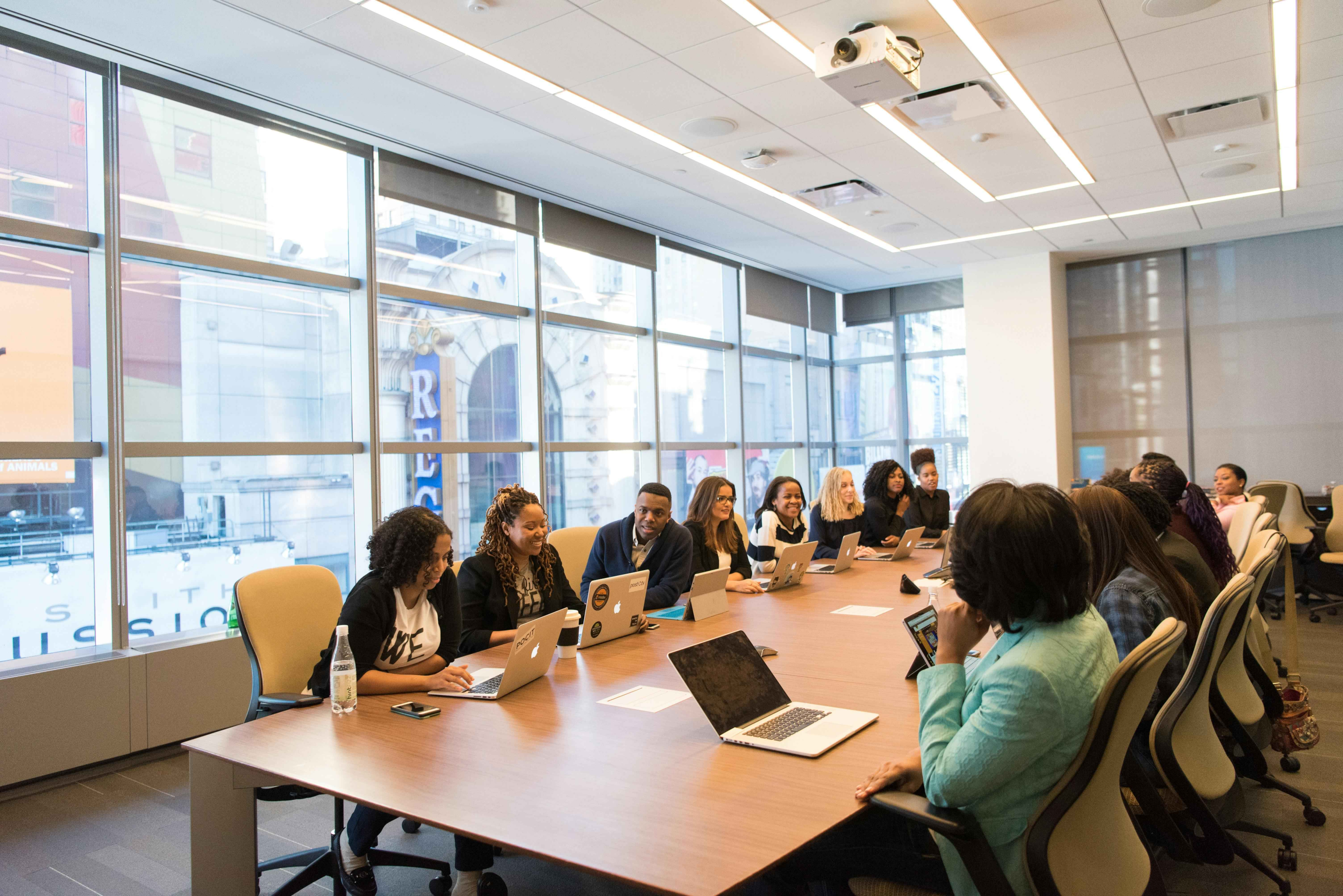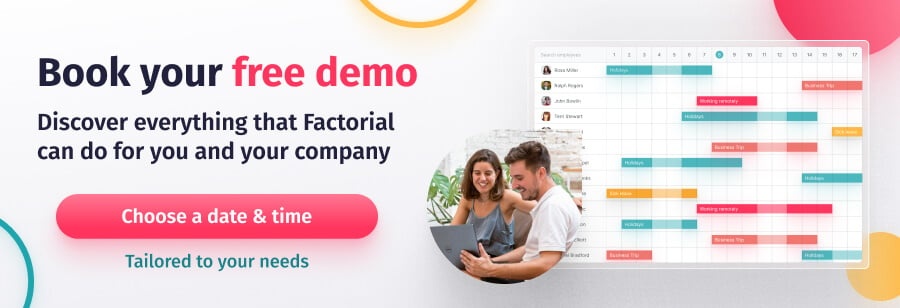What is Workplace Design?
Workplace design is the term for creating a work environment that considers all the elements impacting employees to holistically optimise their performance. In addition to creating the best office layout to maximise efficiency and ensure employees’ safety, workplace design also considers how the workplace can promote teamwork, health and well-being, and enhance employee engagement.
Workplace Design Trends for the Future of Work
In recent years, the way we use our workplaces has changed considerably. As a result of the COVID-19 pandemic, it is now perfectly normal to have a hybrid working model, with employees spending some days in the office and others at home. Technological advances such as AI have also changed the nature of the workplace, with less space required for administrative furniture such as filing cabinets and more consideration required for technical requirements.
Workplace design is responding to the following shifts in the way we work in offices:
- Greater fluidity within the physical office: with people in and out of the office more regularly, employees no longer need a permanent desk, so offices instead require hot desks and shared meeting spaces.
- Focus on technology: workplaces need to accommodate audio-visual equipment to facilitate video calls, and contactless technology is increasingly popular as a way to reduce the potential transmission of disease.
- Future-proofing: the nature of work is changing fast, making it hard for businesses to predict what they need, so companies need offices that they can easily change if necessary.
- Inclusivity: the workplace needs to work for all employees, and this includes those who are neurodivergent and those with physical disabilities which impact what they require in an office.
- Access to health and well-being resources: the modern office space needs to help employees with their self-care, which may include a proper kitchen so employees can eat healthily, space for yoga or pilates, and introducing as much natural light and plant life as possible.

How to Design a Hybrid Workplace
Designing a hybrid workplace involves carefully considering how your employees work best, what will enhance their performance and your expectations regarding where, when and how they work. Here are some factors to think about when designing a workplace strategy for hybrid working:
- How much flexibility do you need in the workplace? Expectations vary between companies regarding when employees must be in the office and when they must not. If you ask employees to be in the office on certain days, your workplace must accommodate more significant numbers on these days and fewer on others. You need space for many people at some points, but you also need to think about creating a good working environment for those people in the office on days with fewer people in the office.
- What are your technical requirements? With remote working comes the increasing use of audiovisual equipment to facilitate meetings and teamwork, and the workplace must incorporate rooms that include this technology. Running a blended meeting with some people online and some people in the office can be challenging, so the space needs to facilitate this.
- How do you create a good working environment? With hybrid working, there is a danger that employees feel disconnected from each other. The hybrid workplace must be managed to enhance conversation and collaboration. Company culture can be enhanced with an upbeat ambience (for example, through the lighting, acoustics and use of plants) and by providing shared spaces that are enticing to work in.
- How can you look after your employees’ health and well-being? Whether designed for hybrid working or not, any workplace needs to consider the health and safety requirements of its employees. A design that encourages self-care and prioritises wellness is also essential. Examples could include introducing plenty of natural light, a space for a yoga or pilates class, a kitchen area that encourages people to eat well and take proper breaks over their lunch and so on.

FAQs
What is workplace design?
Workplace design is the process of creating a workplace that maximises employee productivity with a holistic approach that also future-proofs the needs of the business.
What are the benefits of workplace design?
Good workplace design leads to enhanced employee productivity, which helps meet business goals. By understanding how employees work best and tailoring the workplace to that knowledge, workplace design also allows companies to conduct detailed risk assessments. Understanding the health and safety risks of working environments and the impact of other aspects of the working environment, such as desk arrangements, technology and ambience, on employee engagement and productivity is critical to running a successful business.
How do lean principles influence workplace design and use?
Lean principles focus on eliminating waste from work processes to enhance performance. Workplace design uses these principles in the following ways:
- Sort and simplify: remove anything from the environment that is not absolutely necessary for the work required or employee well-being
- Clean: the workplace needs to be easy to keep tidy, clean and organised so that employees can focus on what matters and not get caught up in sorting out unnecessary tasks
- Make it sustainable: create a workplace that minimises the work involved to keep it functioning at its best and in an environmentally friendly way

What is activity-based workplace design?
Activity-based workplace design involves using the activities employees will be engaged in as they work to design the office space. For example, the design may include different-sized meeting rooms to enhance collaboration within teams of different sizes, quiet work spaces for those who need to focus, shared desks for one-to-one projects and so on.
Activity-based workplace design considers how people work and how to enhance this through their working environment, as well as the basic requirements for the office space.

What are the benefits of biophilic design in the workplace?
Biophilic design aims to bring the natural world into the built environment. In terms of workplace design, this involves introducing as much natural light as possible into office spaces, using natural materials such as wood and stone, introducing earthy tones (greens and browns) to the interior decor, and having as many plants as possible in the space.
Biophilic design in the workplace benefits companies because it helps improve employee health and well-being, which leads to better employee engagement and enhanced performance.


